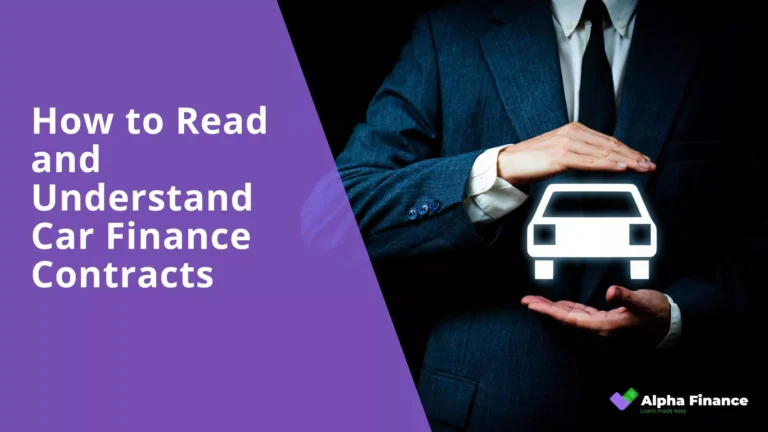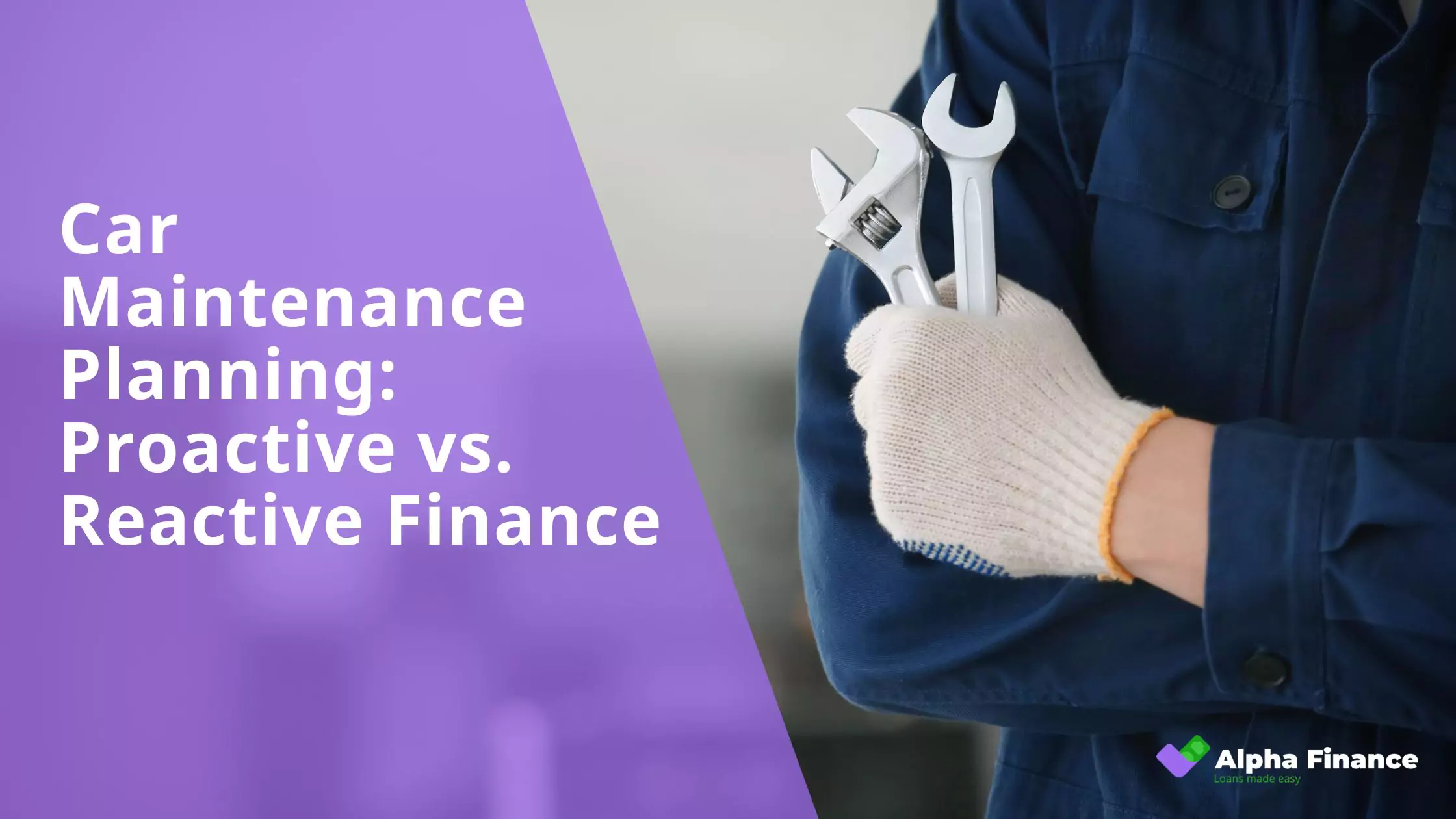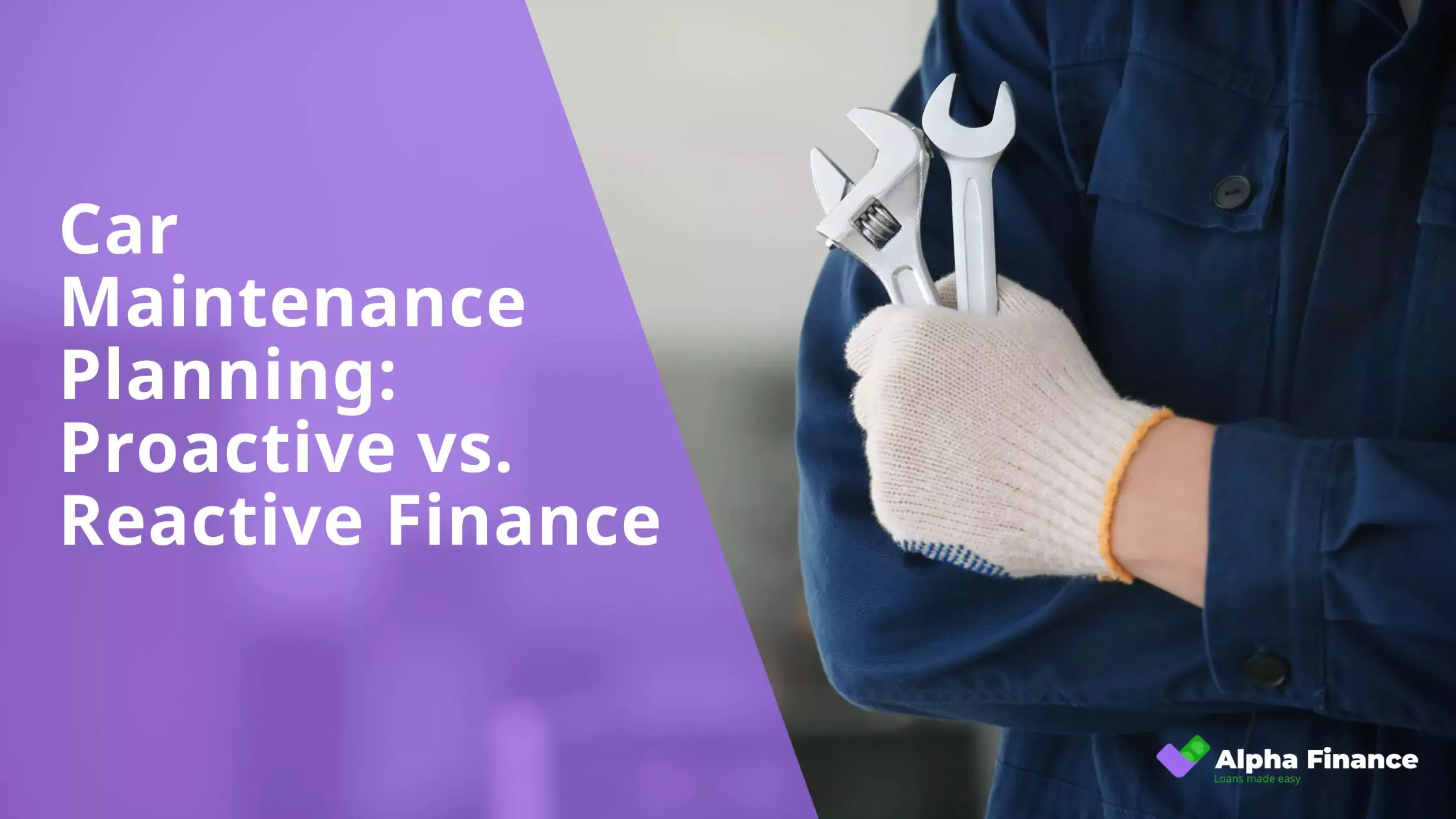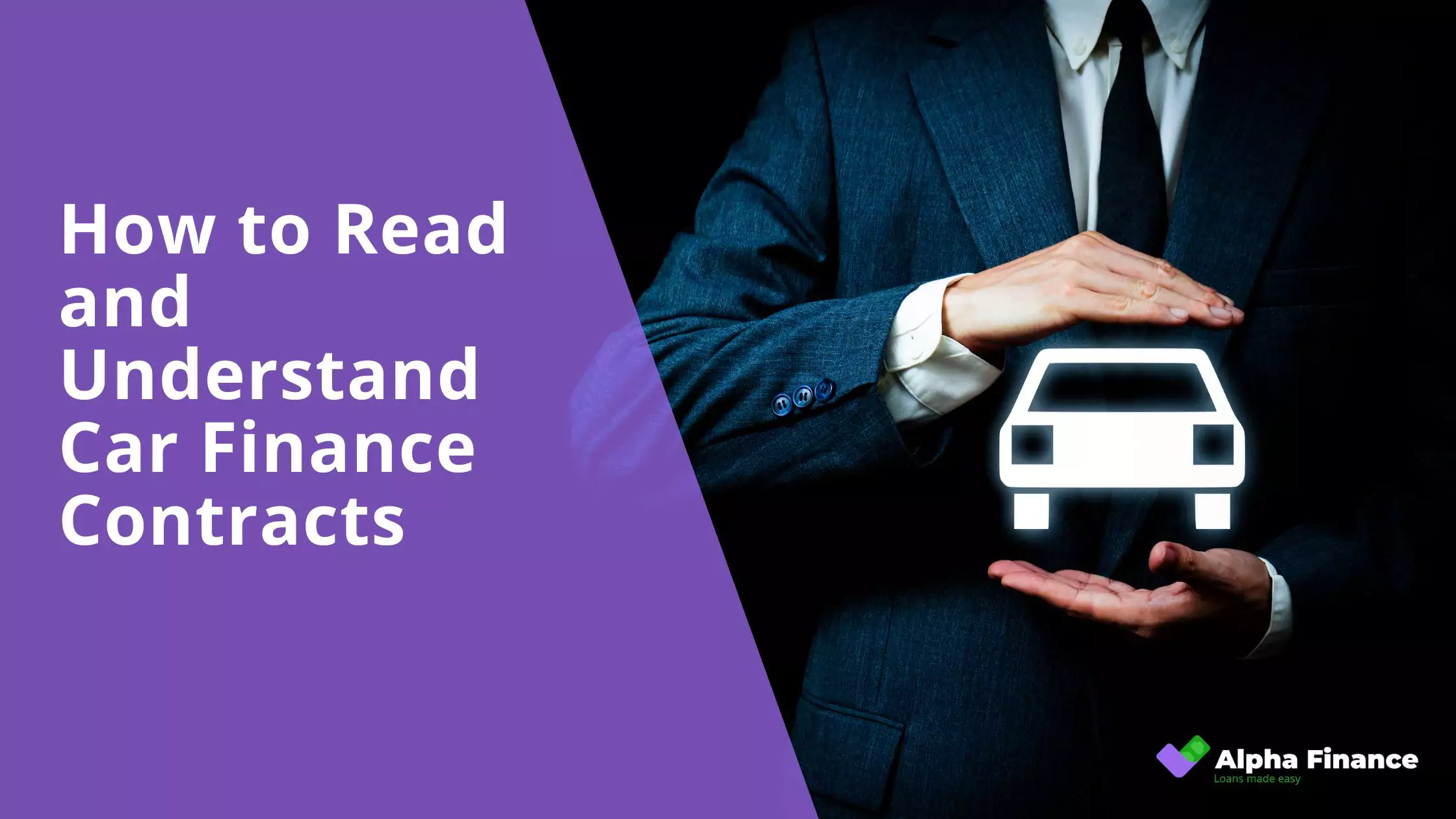You’ve found your dream car, negotiated a price, and the excitement is palpable. Now, a stack of dense paperwork is placed in front of you. It’s incredibly tempting to skim through and sign quickly, eager to get the keys. However, that car finance contract holds the keys to your financial future, and rushing through it is a common, yet potentially costly, mistake.
Many Australian car buyers fall into the trap of misunderstanding their car financing agreements. This can lead to significant financial stress, hidden costs, unexpected obligations, and even disputes down the line. While the terms can seem complex, taking the time to truly understand your contract is absolutely crucial for protecting your finances and ensuring a smooth, predictable car ownership experience. In this blog post, we’ll demystify car finance contracts. We’ll walk you through the key sections and vital terms you need to look out for, highlight common pitfalls to avoid, and provide practical, step-by-step guidance on how to review your contract effectively before you commit.
Why Thoroughly Reading Your Contract is Non-Negotiable
For any Australian car buyer, dedicating ample time to meticulously read and understand your car finance contract is not just advisable; it is absolutely non-negotiable. This document is a legally binding blueprint of your financial obligations, and skipping over its details can lead to severe and long-lasting consequences.
-
Protecting Your Financial Future:
- Preventing Costly Mistakes: A thorough read empowers you to avoid inadvertently signing up for repayment terms that you genuinely cannot afford, or agreeing to obscure obligations that you don’t fully comprehend. This proactive step acts as your first line of defence against financial overcommitment.
- Avoiding Hidden Pitfalls: The fine print is where hidden fees, excessively high interest rates (sometimes disguised by attractive headline figures), or other unfavourable clauses often reside. By scrutinising every detail, you can identify and potentially avoid these financial traps that could significantly inflate the true cost of your car over time.
-
Legal Binding Agreement:
- Irrevocable Commitment: Once your signature is on that document, it transforms into a legally binding contract. This means you are legally obligated to adhere to all its terms and conditions, regardless of whether you fully understood them at the time of signing.
- Ignorance is Not an Excuse: In the eyes of the law, simply stating that you didn’t read or understand a particular clause is generally not considered a valid defence. The contract explicitly lays out both your responsibilities as the borrower and the lender’s rights, including the actions they are legally permitted to take if you fail to meet your obligations.
-
Avoiding Unexpected Costs:
- Full Cost Disclosure: A comprehensive review of the contract reveals all the costs associated with the loan, not just the attractive monthly repayment figure often highlighted by salespeople. This includes upfront establishment fees, ongoing monthly service charges, and various potential penalties for late payments or early repayment.
- True Comparison: Understanding every line item allows you to accurately compare the true, total cost of different loan offers from various lenders. This enables you to make a decision based on the actual financial burden, rather than being swayed by marketing or initial low monthly figures that don’t reflect the whole picture.
-
Empowering Negotiation:
- Informed Stance: Possessing a clear understanding of the specific terms and conditions of a finance offer puts you in a powerful position. You can identify specific clauses, fees, or rates that might be negotiable.
- Confident Decisions: With this knowledge, you can either negotiate for better conditions (e.g., lower fees, removal of certain restrictive clauses) or, crucially, confidently walk away from a deal that isn’t financially sound or suitable for your individual needs.
-
Safeguarding Your Credit Score:
- Preventing Defaults: A precise understanding of your repayment schedule, including exact due dates, amounts, and any conditions for payments, is essential. This knowledge helps you meticulously plan your finances to avoid missing payments or, worse, defaulting on the loan.
- Long-Lasting Impact: Missing payments or defaulting can cause significant and long-lasting damage to your credit score, which can severely impact your future ability to secure other forms of credit, such as a home mortgage, personal loans, or even utility contracts.
Key Sections and What to Look For
Car finance contracts, while often lengthy and filled with legal jargon, typically follow a common structure. Knowing what to specifically look for in each section is paramount to truly understanding your financial commitment.
-
Parties to the Contract:
- Accurate Identification: At the very beginning, carefully verify that your full legal name, current address, and accurate contact details are correctly stated. Equally important, ensure the lender’s full legal name and their Australian Credit Licence (ACL) number are clearly present. This confirms you are dealing with a legitimate, regulated entity.
- Guarantors (if applicable): If another individual (e.g., a parent, partner) is acting as a guarantor for your loan, their names and, crucially, their exact legal obligations if you default on the loan must be explicitly detailed. Understand that a guarantor is equally and fully liable for the debt.
-
Loan Summary / Key Facts Sheet (if applicable):
- Initial Snapshot: Many responsible lenders, especially for consumer credit, provide a summary or “Key Facts Sheet” at the very beginning of the contract. This offers a quick, high-level overview of the main loan terms.
- Crucial Cross-Reference: Always cross-reference these summary figures meticulously with the detailed clauses found throughout the main body of the contract to ensure complete consistency and accuracy. Discrepancies should be questioned immediately.
- Key Financial Figures to Confirm:
- Amount Financed: This is the precise total principal amount of money you are borrowing. Ensure it matches the vehicle’s price plus any agreed-upon fees that are being financed.
- Total Amount Repayable: This is arguably the most critical figure. It represents the sum of all principal and interest payments you will make over the entire loan term. This figure reveals the absolute true overall cost of the loan, including all interest and most fees.
- Annual Percentage Rate (APR): Beyond just the nominal interest rate, the APR represents the effective yearly rate of interest being charged, incorporating most mandatory fees and charges associated with the loan. This provides a more accurate, holistic reflection of the actual cost of borrowing and is indispensable for comparing different loan offers apples-to-apples.
- Loan Term: Clearly specifies the total duration, typically in years or months (e.g., 5 years, 60 months), over which you are expected to repay the loan.
- Repayment Frequency & Amount: Clearly states how often you need to make payments (e.g., weekly, fortnightly, monthly) and the precise amount of each payment.
-
Interest Rate & Calculations:
- Fixed vs. Variable:
- Fixed Rate: The interest rate remains constant for the entire loan term, providing predictable and unchanging monthly repayments, which can be good for budgeting.
- Variable Rate: The interest rate can fluctuate with market conditions (e.g., changes to the Reserve Bank of Australia’s cash rate). This means your repayments could potentially go up or down, introducing a degree of uncertainty. Understand the implications of each type.
- How Interest is Calculated: Inquire specifically about how interest is calculated (e.g., daily, monthly, annually) and if it compounds. Daily compounding, for example, can mean you pay slightly more interest over time compared to monthly compounding for the same nominal rate.
- Comparison Rate: This is a powerful consumer protection tool in Australia. Lenders are legally required to provide a “comparison rate.” This rate includes the principal interest rate plus most fees and charges associated with the loan, expressed as a single, all-encompassing percentage. It is absolutely essential for accurately comparing the true cost of different car loans across various lenders, as it standardises the calculation of costs.
- Fixed vs. Variable:
-
Fees and Charges:
- Transparency is Key: Scrutinise every listed fee, as these seemingly small charges can accumulate significantly and add to the loan’s overall cost, often surprising borrowers later.
- Common Fees to Look For:
- Establishment/Application Fee: An upfront, one-time cost to set up the loan.
- Monthly Service Fee: An ongoing administrative fee charged periodically, typically monthly.
- Late Payment Fees: Penalties incurred if you miss a repayment or make it after the due date. Understand the amount and how they are applied.
- Early Repayment/Exit Fees: These are crucial “gotcha” clauses for many borrowers. Some loans penalise you if you choose to pay off the loan sooner than the agreed term. This can significantly negate the benefits of accelerating your repayments and saving on interest. It’s vital to understand if these apply and how they are calculated.
- Default Fees: Additional costs incurred if you default on the loan agreement (e.g., costs associated with collections or repossession).
- Broker Fees: If you utilised a finance broker, ensure any fees they charge for their services are clearly disclosed in writing and are justifiable.
-
Repayment Schedule & Provisions:
- Clear Schedule: The contract should clearly outline your exact payment due dates and amounts for the entire loan term, including any variations if interest rates are variable.
- Ability to Make Extra Payments: Check if the contract explicitly allows you to make additional repayments (above your minimum) without incurring any penalties. This is a key feature if you wish to reduce your principal faster and save a substantial amount on total interest paid.
- Ability to Pause/Defer Payments: Understand the specific conditions under which you might be able to pause or defer payments (e.g., in cases of financial hardship due to job loss, illness, or other unforeseen circumstances). Look for specific “hardship clauses” and the process for invoking them.
-
Security (for Secured Loans):
- Collateral: For virtually all secured car loans, the car itself is used as collateral for the loan. The contract will explicitly state that the lender holds a security interest over the vehicle.
- Lender’s Rights if You Default: Understand the lender’s legal rights if you default on the loan agreement. These rights typically include the ability to repossess the vehicle to recover their outstanding debt, as detailed in the contract.
-
Insurance Requirements:
- Comprehensive Insurance: For secured car loans, lenders almost invariably mandate that you maintain comprehensive car insurance for the entire duration of the loan. This is because the insurance protects their asset (the car) in case of damage, theft, or write-off.
- Loan Protection/Add-on Insurances: Be extremely vigilant about any additional insurance products (e.g., loan protection insurance, GAP insurance, tyre and rim insurance) that might be added to your finance contract. These are often high-commission products sold at the dealership and may not be necessary, suitable, or provide good value for your needs. Ensure they are genuinely optional, and you are not being pressured into them. Always conduct independent research on these products before agreeing.
-
Warranties and Guarantees:
- Extended Warranties: If you are being sold an extended warranty, ensure it’s presented as a separate product with its own terms and conditions, distinct from your finance agreement. Understand its terms independently, as it has nothing to do with your loan’s repayment structure.
-
Cooling-Off Period:
- Consumer Rights: Under Australian consumer law, borrowers generally have a cooling-off period (often one business day, but this can vary depending on the specific type of credit contract and state/territory laws) during which they can cancel the credit contract without penalty. Know if your contract includes this right, its specific duration, and the process for exercising it.
-
Dispute Resolution & Hardship Clauses:
- Problem Resolution: The contract should outline the clear process for resolving any disputes that may arise between you and the lender. This often includes internal dispute resolution procedures and information about external dispute resolution schemes (e.g., Australian Financial Complaints Authority – AFCA).
- Financial Hardship: Look for specific clauses detailing what happens if you face financial hardship (e.g., job loss, serious illness, relationship breakdown) that impacts your ability to meet repayments. Legally, lenders generally have obligations under the National Credit Code to work with you during genuine hardship.
Common Financial Pitfalls to Watch Out For
Even with good intentions, several common pitfalls can trap Australian car buyers in unfavourable car finance contracts. Being aware of these traps is the first step to avoiding them.
-
High Interest Rates for Your Credit Profile:
- Not Shopping Around: A primary mistake is accepting the first loan offer you receive, particularly from a dealership, without comparing rates from multiple banks, credit unions, and online lenders. This can lead to paying a much higher interest rate than your credit profile actually qualifies for.
- Ignoring Your Credit Score: Many buyers are unaware of their own credit score or history. Lenders use this to assess risk. A low score leads to higher rates, but accepting a high rate without trying to improve your score or finding a lender that offers better terms for your profile is a pitfall.
-
Hidden Fees and Charges:
- Overlooking the Fine Print: Contracts can contain various fees that significantly increase the total cost of the loan beyond the advertised interest rate. This includes upfront establishment fees, ongoing monthly administration or service fees, and crucially, early exit or repayment fees if you wish to pay off your loan sooner. These can quietly add thousands to your overall expense.
-
Long Loan Terms Leading to More Interest:
- The Monthly Payment Trap: Salespeople often highlight lower monthly payments achieved by stretching the loan term (e.g., 7 years instead of 3 or 5). While this makes repayments seem more affordable, it dramatically increases the total amount of interest you will pay over the life of the loan, making the car significantly more expensive in the long run.
-
Negative Equity (The “Upside-Down” Loan):
- Value vs. Debt: This occurs when the outstanding balance of your car loan is greater than the car’s current market value. It’s common with a low or no deposit and a long loan term, especially when coupled with rapid vehicle depreciation.
- Risk: If your car is written off or stolen while in negative equity, your insurance payout won’t cover your loan, leaving you with a debt for a car you no longer own. (As discussed in our previous blog post on Gap Insurance).
-
Unnecessary Add-on Products:
- Pressure Sales: Many consumers are pressured into buying additional products like extended warranties, loan protection insurance, or roadside assistance directly through the finance contract. These products often come with high commissions for the seller and are inflated in price.
- Limited Value: Often, these add-ons aren’t worth their cost, or the coverage they provide is already implicitly covered by Australian Consumer Law or your comprehensive car insurance policy. Financing them adds more interest to your loan.
-
Balloon Payments:
- Misunderstood Lump Sum: A balloon payment is a large lump sum due at the very end of the loan term, which is not covered by your regular repayments. This is often used to lower monthly payments throughout the loan. Many buyers misunderstand or forget about this final, significant payment, leading to financial shock when it falls due.
-
Not Understanding Default Clauses:
- Consequences of Missed Payments: Failing to understand the consequences of missing even one payment can be dire. Contracts clearly outline penalties, including late fees, damage to your credit score, and ultimately, the lender’s right to repossess your vehicle if you default.
-
Dealer Finance Pressure:
- Rushed Decisions: Car salespeople are often incentivised to close deals quickly, including finance. This can create an environment where buyers feel rushed, pressured, or guilty about taking time to read the contract thoroughly. Signing under pressure is a common way to miss critical details.
Practical Steps to Review Your Car Finance Contract
Effectively reviewing your car finance contract requires a calm, methodical approach. Follow these steps to ensure you’re making a fully informed decision.
-
Don’t Be Rushed:
- Take it Away: Politely but firmly request to take a copy of the contract away from the dealership or sales environment to read it in a quiet, undisturbed setting.
- Ample Time: Ideally, aim to have a copy to review at least 24 to 48 hours before you are expected to sign. This allows time for digestion and seeking advice. Never sign a contract under pressure or on the spot.
-
Read Every Single Clause:
- No Skimming: This is not a novel; every word and sentence has legal significance. Resist the temptation to skim. Read each clause carefully, even the seemingly standard ones.
- Highlight Key Info: Use a highlighter to mark key figures (interest rates, total amounts, fees), important terms (e.g., fixed vs. variable), and any clauses you don’t immediately understand.
-
Ask Questions (and Get Answers in Writing):
- Clarification is Key: If any part of the contract is unclear, ambiguous, or raises concerns, immediately ask the lender or finance broker for clear, simple clarification.
- Document Answers: Whenever possible, get important answers or confirmations in writing (e.g., via email). This provides a record and prevents misunderstandings later.
-
Crunch the Numbers Yourself:
- Verify Calculations: Don’t just trust the figures provided. Use a calculator to independently verify the total repayment amount, monthly payments, and the total interest you will pay over the loan term.
- Compare APR: Crucially, compare the Annual Percentage Rate (APR) and the Comparison Rate (the true cost of the loan including most fees) with other loan offers you’ve received. This ensures you’re getting a competitive deal.
-
Seek Independent Advice:
- Expert Review: If the loan is substantial, the terms seem complex, or you simply feel unsure, seriously consider showing the contract to an independent financial advisor or a financial counsellor (free services available in Australia through organisations like the National Debt Helpline).
- Spotting Red Flags: These professionals are trained to spot red flags, understand legal jargon, and advise you on whether the contract is fair and suitable for your financial situation.
-
Beware of Pre-Filled Forms:
- Verify Accuracy: If the contract is pre-filled, double-check that all your personal details, the loan amount, and all terms and conditions are completed accurately and reflect what was agreed upon verbally. Discrepancies can lead to future issues.
-
Keep a Copy:
- Your Records: Always ensure you receive a signed copy of the final, executed contract for your personal records. This document is your proof of agreement and reference point for all terms and conditions throughout the loan’s duration.
Conclusion
Ultimately, understanding your car finance contract is not merely a formality; it is absolutely paramount to avoiding significant financial pitfalls and ensuring a smooth car ownership experience. This crucial document serves as your primary shield against unexpected costs, hidden fees, and future financial stress. By taking the time to meticulously read every clause, ask clarifying questions, and independently verify the numbers, you empower yourself as a consumer. This diligence transforms a potentially confusing legal document into a clear roadmap of your financial obligations and rights. Remember, a car loan should drive your journey, not trap your finances. Be informed, be diligent, and sign with confidence, knowing you’ve made a financially sound decision.
Flexible Car Loan Terms to Suit You
Finding the right car loan involves more than just a competitive interest rate; it’s also about securing flexible car loan terms to suit you and your unique financial situation. Whether you need a shorter term to pay off your loan quickly or a longer term to manage smaller monthly repayments, having options is key. Flexible terms can help you align your car finance with your budget, income frequency, and future financial goals, ensuring your loan works for you. At Alpha Finance Australia, we understand that one size doesn’t fit all. Explore our range of flexible car loan solutions with Alpha Finance Australia today and discover how we can tailor a finance package to fit your life.




